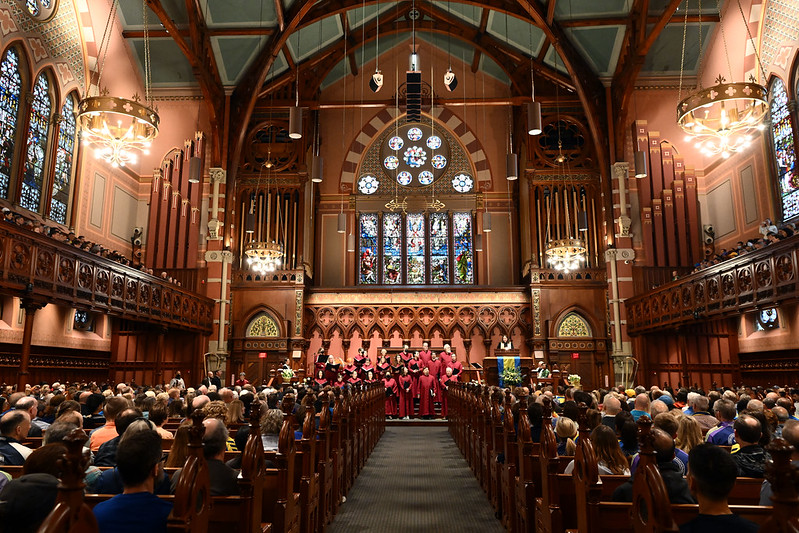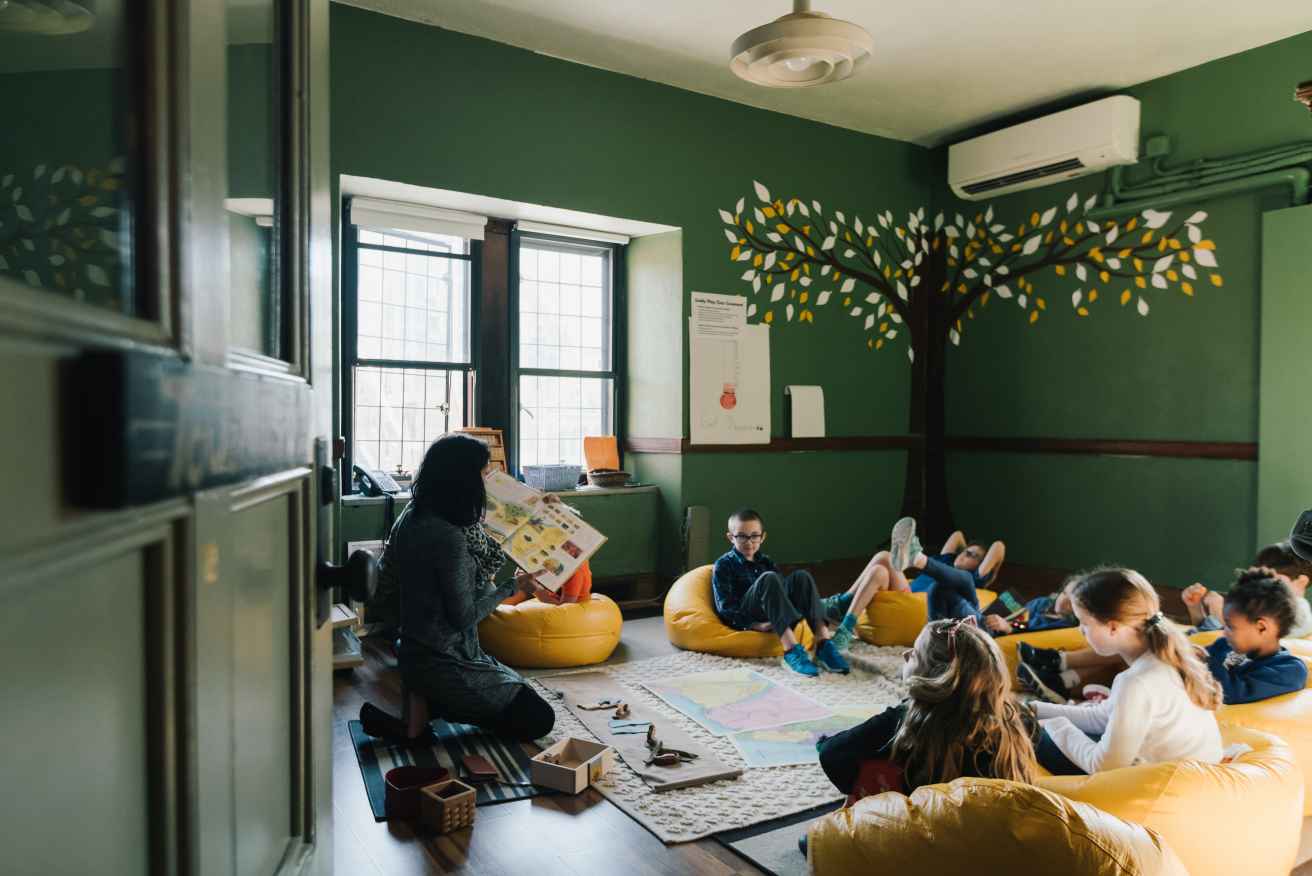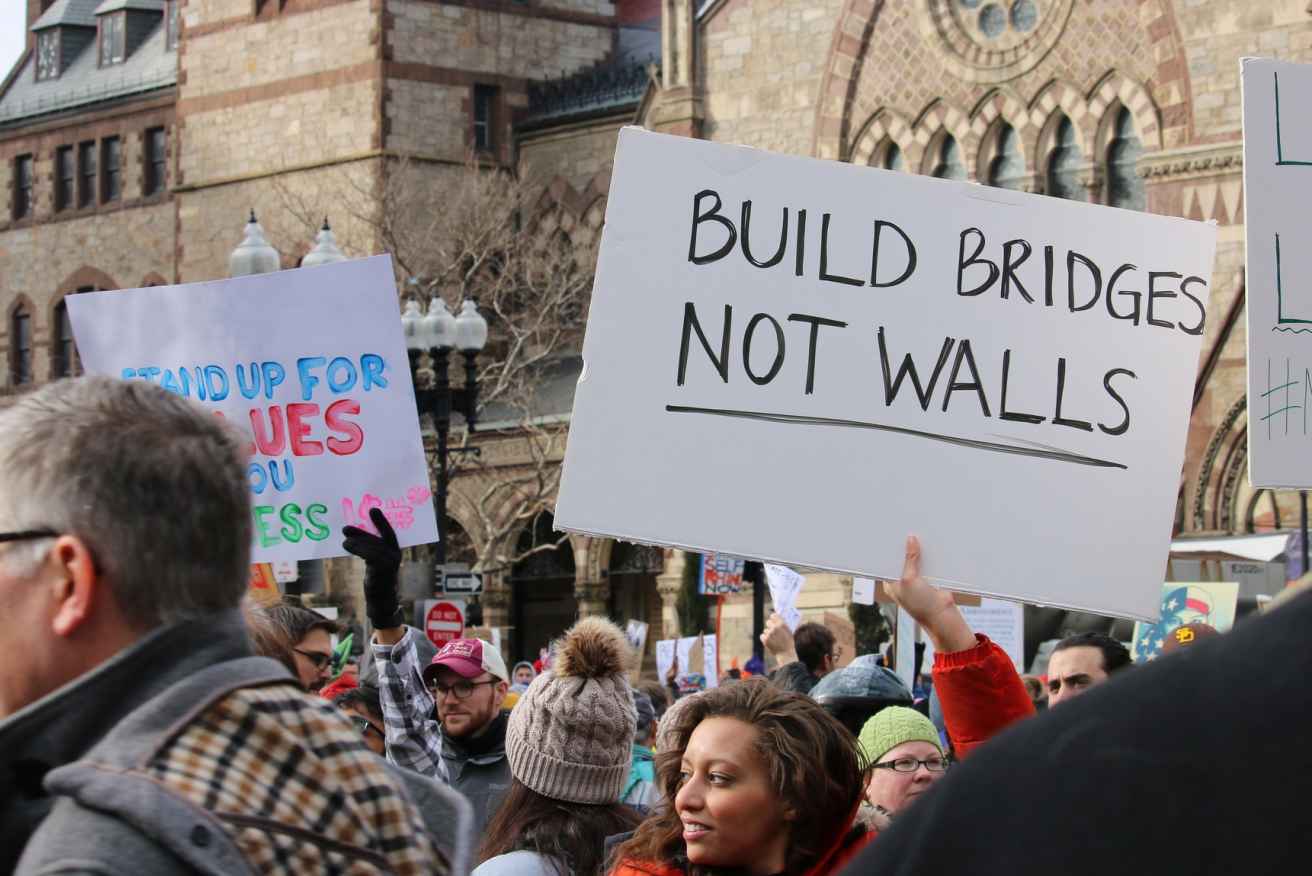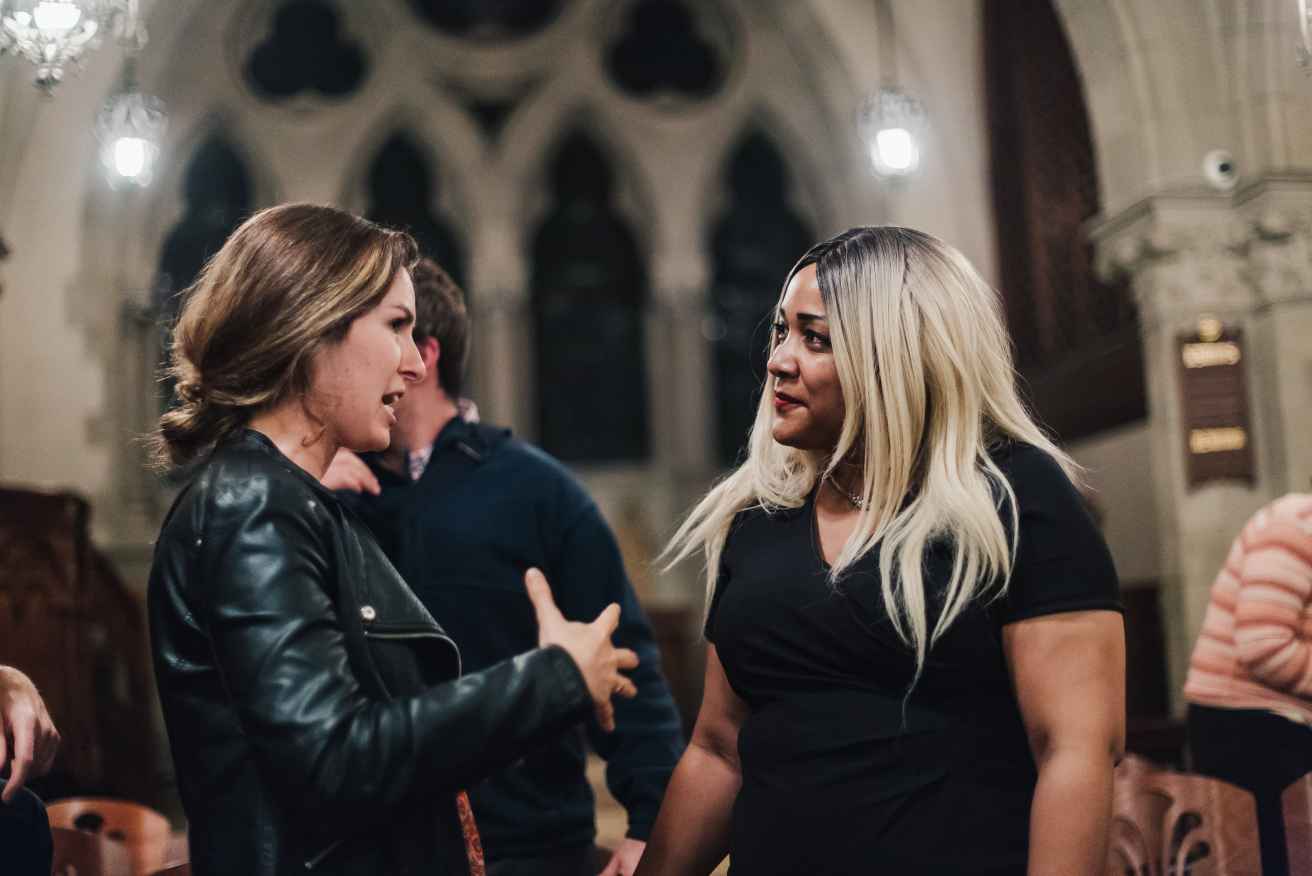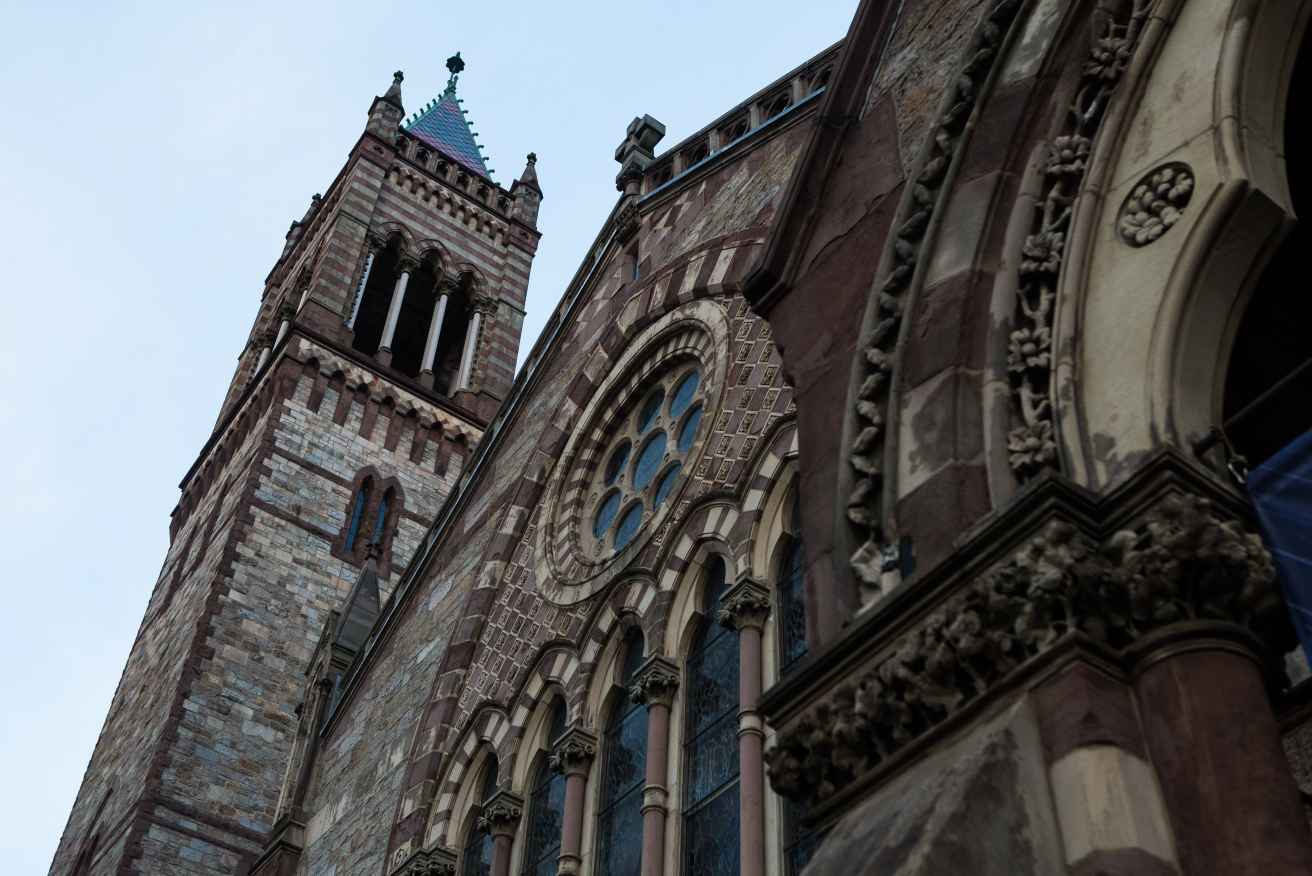Festival Worship - Sixth Sunday after Pentecost
Festival Worship - Sixth Sunday after Pentecost
Handsel
Handsel, a sermon by Nancy S. Taylor, Senior Minister, Based on Genesis 23: 1-20
Preached on the Sunday of the dedication and consecration of the Robert C. & Coley K. Elder Memorial Columbarium
Handsel, archaic. A gift given at the beginning or to mark an acquisition or the start of an enterprise, supposedly to bring good luck.
Abraham has a problem, a dilemma. What’s more, this problem, this dilemma is on top of his heartache, his heartbreak, on top of his profound grief. You see, Sarah has died. Sarah, his bride of many decades. Sarah, mother of their son, Isaac. Sarah, who had been with Abraham through thick and thin, for better for worse, for richer for poorer, in sickness and in health until, well, until parted by death.
Abraham’s beloved Sarah is dead. The problem, the dilemma is that her body, her lifeless corpse is still there, at home, and Abraham has nowhere to bury her.
Abraham is an immigrant, an alien in the land of Canaan. He lives a nomadic life. He and his household live in tents. His livestock graze on other people’s land. It was fine, for the living to get by as sojourners, nomads. But the dead need a place…some permanent resting place.
And so it is that in the 23rd chapter of the Book of Genesis the biblical author takes great pains to recount the process of procuring a final resting place for Sarah’s body: the formal, polite negotiations, the back and forth between Abraham, the buyer, and a prospective seller. The negotiations involve the locals, all of whom have a say, a voice and vote on whether to permit this alien to own property and, thus, to become as one of them. (That matter, of aliens, that’s another sermon for another day.)
In this case, as it turns out, the locals are delighted to welcome Abraham among them as a propertied man. They already know and respect him. What’s more, he is desperate for a parcel
of land. They have him over a barrel. With Sarah’s body beginning to decay, Abraham needs what they have and he needs it now. When the seller suggests a price: “What is 400 shekels between friends?” the answer is: A lot. Four hundred shekels is highway robbery, but Abraham swallows his pride and counts the shekels out, one by one, into the seller’s hands.
With that, Abraham becomes landowning, a propertied man, in possession of quite a bit of acreage now: a large field with lots of trees, and most importantly, a cave.
Tenderly, Abraham wraps the body of Sarah in a shroud. Tenderly, he carries her body into the cave. Tenderly, he lays her down. She is home now, her spirit in the bosom of God and her lifeless corpse in its final resting place: safe and secure on Abraham’s new property.
Later, Abraham’s body too will be laid in that cave, then Isaac’s, then Rebekah’s, then Leah’s, then Jacob’s.
How do you care for, what do you do with, the mortal remains of your beloved dead? When the spirit is returned to God in heaven, when the life and light that animated your loved one’s body, is gone, when the spirit that was the person you loved, has vacated the corpse … what then?
We humans have been burying our dead, that is, thoughtfully and intentionally disposing of the bodies’ of our dead, for at least 100,000 years. At heart, burial is a sign of respect for the body of our beloved. We don’t discard it in the trash bin. We don’t leave it out for scavengers. Some of that practice relates to public health, but there’s more to it: instinctively, we can’t bear to watch the bodies of our loved ones decompose. And, equally as instinctive is the notion of respect; the human body is an amazing thing, a wonder to behold. Our bodies are fundamental to our identities and how we know one another.
I know you by the sound of your voice, by the tilt of your head, by the expressions on your face, by the rhythm of your stride, by the way you laugh and shrug. These mortal structures, these earthly tents are how we know what it is to be alive: what it is to taste strawberry ice cream, to smell lavender, to hear a baby’s squeal of delight, to hug and be hugged, to love and to be loved, to leap and catch a ball, to paint pictures, make music, to dance, to feel pain. These mortal structures, these earthly tents are how we know each other, how we love each other.
Over 100,000 years ago humans determined to ferry the bodies of our dead to some final resting place and, to take great care over the doing of it: developing the arts of embalming, mummification and cremation; the use of containers: shrouds, caskets, vaults, urns, niches;
the practice of including “grave goods”, a phrase that refers to items to be buried with the dead: pottery, stone tools, food; soldiers are often buried wearing their uniforms and medals. A child might be buried with a favorite stuffed toy; a sports fan with his team’s cap; a chef with an apron. In 1882 the 15th minister of this church, Jacob Manning, a radical abolitionist, was buried in his preaching gown.
Five years ago Old South Church launched a study called: Dying Well: Christian Conversations about Life and Death. For an entire month, that’s all we did. We talked about, preached on, sang of and taught about Dying Well. Asking: What might that look like? What might it feel like? Asking: Can we transform the existential dread of death and dying into a process to embrace, a process we might learn to face, even embrace with confidence and acceptance? Can we accept the fact of our mortality as an integral stage of a natural continuum from conception, to birth, through life, through death, and onto resurrection?
Out of that study there emerged a small group who wanted to talk about burial, about a final resting place for their remains and the remains of their loved ones. We were led ably by our Chairperson, Janet Nolen, and aided by attorney Larry Bowers. Carolyn Arrington was in charge of aesthetics. The Elder family supplied funds and cheered us from afar.
I want to say something about how sweet this work has been. You might be surprised to learn that our laughter throughout this process has been as gentle as it has been persistent. Our laughter has suffused this undertaking like a soft, spring rain. In the face and fact of our mortality, we laugh!
The undertaking has led to the installation of The Robert Carl and Coley Kellam Elder Memorial Columbarium, located in the former Children’s Chapel. The Columbarium is comprised of rows of niches to hold cremated remains. We will dedicate the Columbarium today following Festival Worship.
A word about the title of this sermon, a word I have only recently learned: Handsel. Archaic, meaning: A gift given at the beginning or to mark an acquisition or the start of an enterprise, to bring good luck. I found the word in an entry from Samuel Sewell’s diary, dated June 19, 1700.
Samuel Sewall is the colonial diarist and judge, a much revered early member of this church who, among other things, wrote the first anti-slavery tract on this soil.
In his diary entry of June 19, 1700 Sewall is commenting about another member of this church, John Eyre, who has recently died at the age of 46. He writes: “Mr John Eyre is entombed this day.” And then Sewall adds this: “Nine of his children are laid there to handsel the new burying place.”
The fact that John Eyre was preceded in death by nine of his children speaks to the heartache of life in the 1600’s. That, too, is another sermon for another time
To handsel: to inaugurate something, especially by being the first. As the bodies of the children of John Eyre handselled that new burying place, so it is that the urns of Bob and Coley Elder beloved members of this church, the gentlest, most generous of people – handsel our new burying place.
With us today are eleven members of Bob’s and Coley’s family: their three children, Robert, Elizabeth and Ralph, along with spouses and their children. I am here to give witness to this:
that the goodness and the generosity and the humility and the humor of Bob and Coley has been passed on to their children.
West Minister Abby contains the remains, among others, of Isaac Newton, Charles Darwin and now, Stephen Hawking.
Old South Church contains the remains of Bob and Coley Elder, and, soon will contain the remains of Harry Lyn Huff, David Chandler, David Scott Palmer, and Peter Southwell-Sander. And, over time, also the remains of Jim and Linda Crawford, David Story, Carolyn Arrington, Dick & Elinor Yeo, the Pitcher Sisters, Eleanor Jensen and her parents, Diane Palmer, Joyce Akintola, John Waddlington, Jennifer Craig, Barbara Ansley, the occupants of Pew 99 and, of course, many more. A letter will go out next week to the whole church to announce the opening of the Columbarium for application.
Abraham’s question at the time of Sarah’s death might be yours: When my beloved passes, where will I lay my beloved’s body? Or, perhaps this question: When my time comes, what will become of my body? Which is the same thing as asking: Where do I belong? Where is home?

